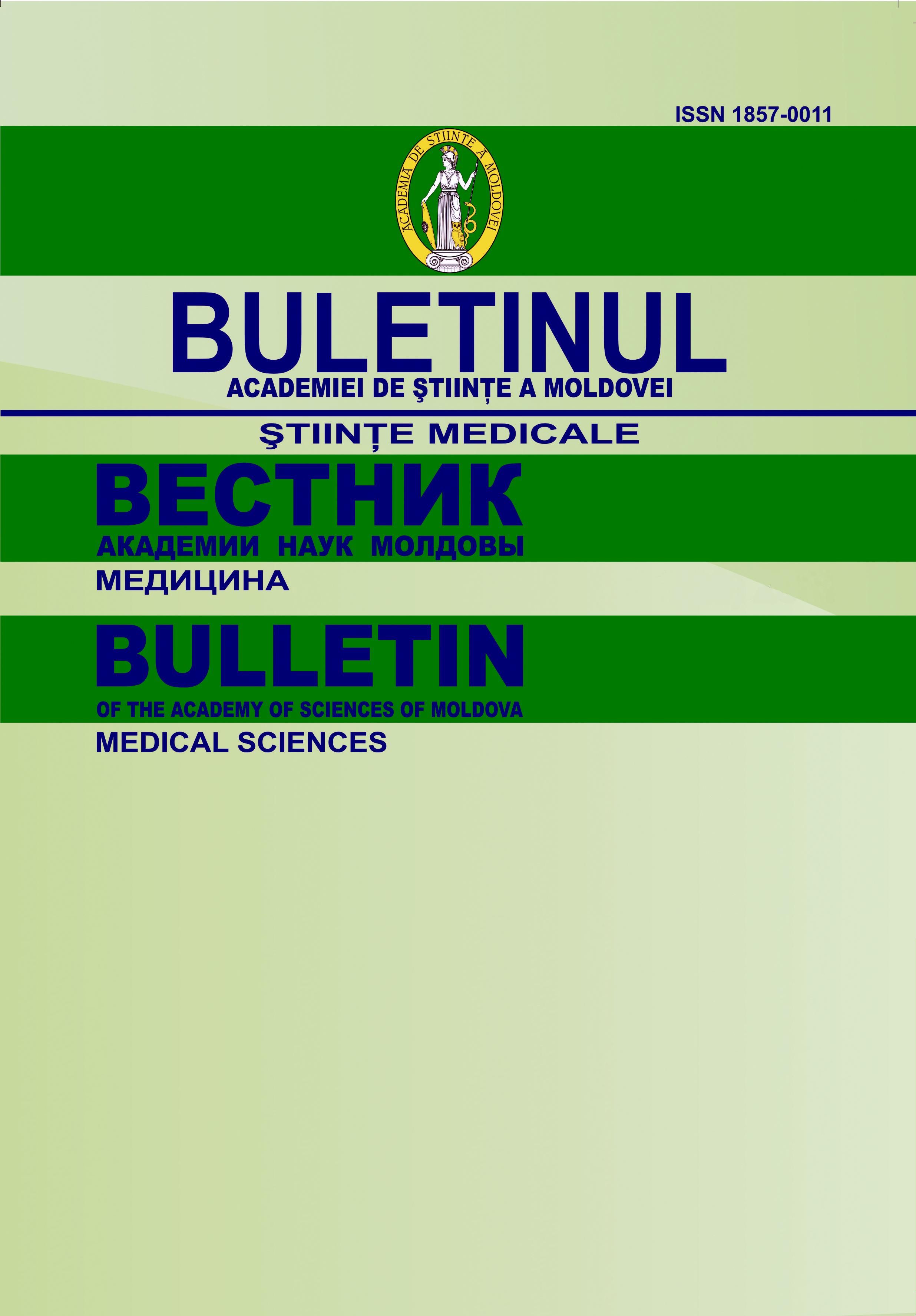Diagnosis and treatment characteristics of mucinous ovarian tumors
DOI:
https://doi.org/10.52692/1857-0011.2021.2-70.16Keywords:
mucinous ovarian tumor, differential diagnosis, tumor marker, surgical treatmentAbstract
Introduction: Ovarian tumors occupy a special place in gynecological pathology due to their great diversity, diagnostic difficulties, specifying their evolutionary nature, establishing the prognosis and treatment. Ovarian mucinous tumors are a group of rare formations, with a cell of as yet undefined origin, but with an apparent progression from benign to borderline and carcinoma. The treatment of a benign ovarian tumor is surgical. Material and methods. The research in question was performed on a group of 50 patients, who were treated in the gynecology department of the IMSP Oncological Institute of the Republic of Moldova, with the diagnosis of mucinous ovarian tumors. Results. The study analyzed data on the diagnosis and treatment of mucinous ovarian tumors. The clinical diagnosis showed a unilateral ovarian involvement in 41 cases (82%) compared to the bilateral one registered in 9 patients (18%). All tumors were large and irregularly shaped. In the case of laboratory diagnosis in assessing the benign or malignant tumor potential, the tumor marker CA-125 was performed, in 41 patients the index was within the norm range from 0-35U / ml and only in 9 cases were there insignificant increases of 50-100U / ml. Ultrasonographic diagnosis is an important method in detecting mucinous ovarian tumors. The treatment of patients is surgical and, depending on the appearance of the tumor intraoperatively and age, they had a radical or less radical character. Conclusions. The most common clinical signs were fullness in the pelvis, dysuria, pain in the lumbar or sacral region. As usual, the mucous ovarian tumors are large. The CA-125 tumor marker was in most cases within the normal range. Imaging investigations are informative and some of them applied to all patients in the study. Endoscopic diagnostic methods are less informative in mucinous ovarian tumors due to bulky formations and the risk of effusion of the mucin into the abdominal cavity
References
Amini A., Masoumi-Moghaddam S., Ehteda A., Morris D. Secreted mucins in pseudomyxoma peritonei: pathophysiological significance and potential therapeutic prospects. In: Orphanet J Rare Dis. 2014 May 5; 9:71. doi: 10.1186/1750-1172-9-71.
Alobaid A., Elamir H., Abuzaid M., Abu-Zaid A. An Extremely Giant Ovarian Mucinous Cystadenoma. In: Gulf J Oncolog. 2019 Jan; 1(29):83-86. PMID: 30956200.
Abbas A., Amin M. Brenner’s tumor associated with ovarian mucinous cystadenoma reaching a huge size in postmenopausal woman. In: J Cancer Res Ther. 2015 Oct- Dec; 11(4):1030. doi: 10.4103/0973-1482.151858.
Agostinho L. Benign ovarian lesions with restricted diffusion In: Radiol Bras. Cunha 2019. Vol. 52, N. 2. P. 106-111.
Brown J., Frumovitz M. Mucinous tumors of the ovary: Current thoughts on diagnosis and management. In: Curr Oncol Rep. 2014;16(6):389.
Vang R., Gown A., Zhao C. et al. Ovarian muci- nous tumors associated with mature cystic teratomas. Morphologic and immunohistochemical analysis identifies a subset of potential teratomatous origin that shares fea- tures of lower gastrointestinal tract mucinous tumors more commonly encountered as secondary tumors in the ovary. In: Am J Surg Pathol. 2007; 31:854–869. doi: 10.1097/PAS.0b013e31802efb45.
Desai A., Xu J., Aysola K., et al. Epithelial ovar- ian cancer: An overview. In: World J Transl Med. 2014, 3(1):1–8.
Jones DR, Vasilakis A, Pillai L, Timberlake GA. Giant, benign, mucinous cystadenoma of the ovary: case study and literature review. In: Am Surg. 1992 Jul; 58(7), 400-3. PMID: 1616184.
Limaiem F, Lekkala MR, Mlika M. Ovarian Cys- tadenoma. 2021 Feb 22. In: StatPearls [Internet]. Treasure Island (FL): Stat Pearls Publishing; 2021 Jan–. PMID: 30725635.
Mills Anne M.; Shanes E. Mucinous Ovarian Tu- mors. In: Surgical Pathology Clinics. 2019. 12(2), 565–585. doi:10.1016/j.path.2019.01.008
Hart WR. Mucinous tumors of the ovary: a review. In: J Gynecol Pathol. 2005 Jan; 24 (1), p. 4-25. PMID: 15626914
Лаурель А. Айлен Тур-Каспа. УЗ-диагностика в репродуктивной медицине. Перевод с английского под редакцией профессора А.И. Гуса. B: Гоэтар-Ме- диа. Москва. 2017.
Нейштадт Э. Ожиганова И. Опухоли яичника. B: издательство "Фолиант". Санкт-Петербург. 2017.
Downloads
Published
Issue
Section
License
Copyright (c) 2021 Bulletin of the Academy of Sciences of Moldova. Medical Sciences

This work is licensed under a Creative Commons Attribution 4.0 International License.



